Have you ever been to a W hotel? Basically, you start with a Westin… pump some EDM into the lobby… drape a few supermodels over the sofas… throw in a couple of glowing waterwalls… charge $20 for a cocktail and $7 a half-hour for wi-fi… double the room rate… lop off five letters… and you’ve found yourself in hipster hell – the W.
My latest (and hopefully final) experience with the hotel sent me right back to my happy place – a shot of bottom-shelf booze and a playlist of straight-up American blues.
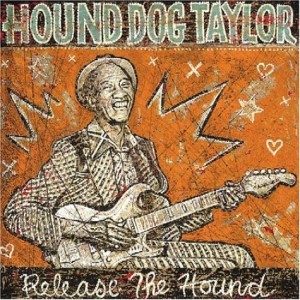 We really haven’t spent too much time here talking about Hound Dog Taylor, and for that I’m very sorry. Imagine for a moment if you were greeted in the lobby of the W with the unholy snarl of Hound Dog’s overheated amp, spitting fire at every mojito-swilling trustfunder in sight. A man can dream, can’t he? If you don’t have any Hound Dog in your life, let me recommend Release the Hound, an outstanding collection of live and studio recordings from 1971 to 1975 – including a few cuts recorded in Cleveland, where life is cheap and young hipsters can’t afford to stay at overpriced hotels. Sadie
We really haven’t spent too much time here talking about Hound Dog Taylor, and for that I’m very sorry. Imagine for a moment if you were greeted in the lobby of the W with the unholy snarl of Hound Dog’s overheated amp, spitting fire at every mojito-swilling trustfunder in sight. A man can dream, can’t he? If you don’t have any Hound Dog in your life, let me recommend Release the Hound, an outstanding collection of live and studio recordings from 1971 to 1975 – including a few cuts recorded in Cleveland, where life is cheap and young hipsters can’t afford to stay at overpriced hotels. Sadie
Clearly, Hound Dog was inspired by Elmore James, who practically invented electric slide guitar. James’ stock in trade was that hard-stomping, “three chords and a cloud of dust” sound heard to great effect in signature tunes such as Wild About You Baby and Dust My Broom. But here’s a more unusual entry in the Elmore James catalog – a stark, yearning blues… part of the grand tradition of songs that equate a train whistle with heartbreak. “Well my baby rode that Sunnyland this mornin’, she didn’t even once say goodbye…” Sunnyland
How about a far more obscure sub-genre: swamp blues/rap from the Fifties? Actually, I have a couple of tunes that fit this bill – Lightnin’ Blues by Lightnin’ Slim (featured here) and this ’58 single by Katie Webster and Ashton Savoy. We’ve already shared a little love for Webster, who played piano on a number of Louisiana blues and pop sessions for the Excello and Goldband labels and even toured with Otis Redding in the Sixties. But who is Ashton Savoy? According to fellow Houston bluesman Sonny Boy Terry (from a 2009 Savoy obit in the Chronicle), he was “a hybrid persona… a mixture of Jimmy Reed, Louisiana Cajun and Texas… a real soulful cat.” Savoy also was “real old school” – he once told Terry that he planned to make a CD with “five songs on one side and five on the other.” Now that’s old school! Baby Baby
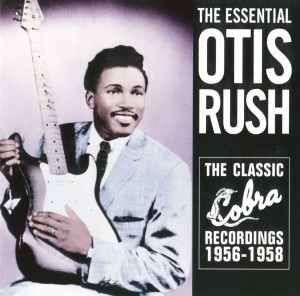 The great Otis Rush got his start with some landmark recordings cut in Chicago at Eli Toscano’s Cobra Records label – specifically, a cramped DIY studio behind Toscano’s record store in the city’s West Side. That’s where blues legend Willie Dixon, disillusioned with his first stint at Chess Records, really hit his stride as a producer and arranger. Dixon also served as a mentor to emerging artists such as Rush, Magic Sam, Buddy Guy and Ike Turner. The label went under in 1959 a few months before Toscano’s body was fished out of Lake Michigan under mysterious circumstances (I guess every story worth telling in Chicago involves the mob). Thankfully he left behind a small yet mighty catalog of essential Chicago blues. I have no idea how Rush landed on the demented riff in this tune, but it’s sheer genius: Sit Down Baby
The great Otis Rush got his start with some landmark recordings cut in Chicago at Eli Toscano’s Cobra Records label – specifically, a cramped DIY studio behind Toscano’s record store in the city’s West Side. That’s where blues legend Willie Dixon, disillusioned with his first stint at Chess Records, really hit his stride as a producer and arranger. Dixon also served as a mentor to emerging artists such as Rush, Magic Sam, Buddy Guy and Ike Turner. The label went under in 1959 a few months before Toscano’s body was fished out of Lake Michigan under mysterious circumstances (I guess every story worth telling in Chicago involves the mob). Thankfully he left behind a small yet mighty catalog of essential Chicago blues. I have no idea how Rush landed on the demented riff in this tune, but it’s sheer genius: Sit Down Baby
I’ve always had a weakness for the next tune, written and recorded by harp player Billy Boy Arnold in 1955. Arnold kicked around with his friend Bo Diddley and a couple other musicians for a few years, playing for spare change on the streets of Chicago as The Langley Avenue Jive Cats. They landed at Chess long enough to record Bo’s first singles for the label (and a few cuts under Billy Boy’s name) in ‘54. But Arnold had to get out from under the long shadow of Little Walter, so he signed with Chicago’s Vee Jay label the following year, where he recorded this blistering cut with a 15-year-old Jody Williams on guitar. Interesting side note: Arnold tried to record another single with Bo in ’55, but was thrown out of the studio when he told Leonard Chess about his recent session at Vee Jay. His replacement on the song Diddley Daddy? Little Walter. I Wish You Would
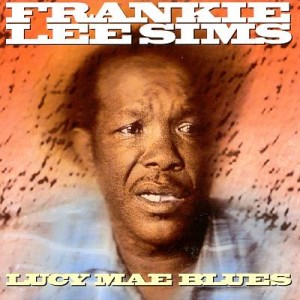 Although inspired by his cousin Lightnin’ Hopkins, New Orleans native Frankie Lee Sims played a more rough and tumble version of the blues (if that’s possible). Sims moved to Marshall, Texas when he was ten, and he’s often associated with other down-home blues artists from the state, including his uncle Texas Alexander and Smokey Hogg. But his sound drew from the entire region – gritty vocals, stinging guitar, sly lyrics and steady-rolling, sun-baked rhythms. Imagine a Texas roadhouse dumped in the middle of a Louisiana swamp. This cut is one of about 20 he recorded for the Specialty label in the Fifties. Essential American music. Lucy Mae Blues
Although inspired by his cousin Lightnin’ Hopkins, New Orleans native Frankie Lee Sims played a more rough and tumble version of the blues (if that’s possible). Sims moved to Marshall, Texas when he was ten, and he’s often associated with other down-home blues artists from the state, including his uncle Texas Alexander and Smokey Hogg. But his sound drew from the entire region – gritty vocals, stinging guitar, sly lyrics and steady-rolling, sun-baked rhythms. Imagine a Texas roadhouse dumped in the middle of a Louisiana swamp. This cut is one of about 20 he recorded for the Specialty label in the Fifties. Essential American music. Lucy Mae Blues
I recently caught a performance on Austin City Limits by singer/guitarist Raphael Saadiq and his smoking-hot band. Although he hates the terms “neo-soul” and “retro,” Saadiq clearly celebrates the well-worn pleasures of Motown, Memphis soul and R&B – and thankfully, his band knows the difference between reverence and raw power. But things got real interesting when harp player Kim Wilson joined Saadiq for some hard-grinding blues (see video below – probably won’t be up for long)… reminded me that Wilson’s playing is about as good as it gets when it comes to the form’s modern-day practitioners. I once heard someone describe him as kind of a jive hepcat and a pale (as in “white”) imitation of Little Walter. Well, when you can sing and play like this (the title cut from his ’93 solo debut), I don’t think you really give a shit what your garden-variety blues purist thinks. Sweet guitar by West Coast jumper Junior Watson: Tiger Man
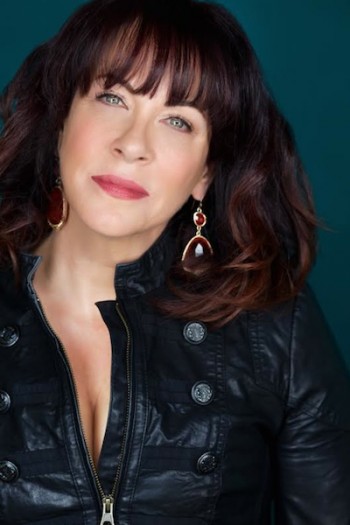 I’m going to blow our entire theme out of the water with our final artist, Janiva Magness. I’ll credit rock legend Al Kooper for turning me on to her (if you like some of the cynical, fogey-esque opinions expressed here, you need to jump on Kooper’s column for The Morton Report: New Music for Old People). Magness’ amazing backstory is both tragic and life-affirming – born in Detroit… both parents committed suicide… grew up in multiple foster homes… pregnant at 17… struggled with addiction (she’s been sober for years)… She also kicked around that godawful blues circuit for three decades (and played more than a few near-empty rooms, I’m sure). After six years at Chicago-based Alligator Records, she just released a new album on the Fathead label, Original. As the title suggests, it’s all-original music – probably more in the Americana vein than blues. More important, it’s an impressive, heartfelt outing from an artist who’s clearly paid her dues. Magness has no use for the histrionic bullshit you typically hear in contemporary pop singing. Her voice is deep, soulful and down to the bone… In other words, every note serves the song. It’s also worth noting that her musical journey started when she was 14 (“probably high,” she told a reporter) and caught Otis Rush in a Minneapolis club. Turns out the blues was her salvation. I definitely can relate to that. For more on Magness, check here. Let Me Breathe
I’m going to blow our entire theme out of the water with our final artist, Janiva Magness. I’ll credit rock legend Al Kooper for turning me on to her (if you like some of the cynical, fogey-esque opinions expressed here, you need to jump on Kooper’s column for The Morton Report: New Music for Old People). Magness’ amazing backstory is both tragic and life-affirming – born in Detroit… both parents committed suicide… grew up in multiple foster homes… pregnant at 17… struggled with addiction (she’s been sober for years)… She also kicked around that godawful blues circuit for three decades (and played more than a few near-empty rooms, I’m sure). After six years at Chicago-based Alligator Records, she just released a new album on the Fathead label, Original. As the title suggests, it’s all-original music – probably more in the Americana vein than blues. More important, it’s an impressive, heartfelt outing from an artist who’s clearly paid her dues. Magness has no use for the histrionic bullshit you typically hear in contemporary pop singing. Her voice is deep, soulful and down to the bone… In other words, every note serves the song. It’s also worth noting that her musical journey started when she was 14 (“probably high,” she told a reporter) and caught Otis Rush in a Minneapolis club. Turns out the blues was her salvation. I definitely can relate to that. For more on Magness, check here. Let Me Breathe
As promised, Raphael Saadiq and Kim Wilson on Austin City Limits…
Janiva Magness and band dig into a song from her 2012 Alligator release, Stronger For It, with Dave Darling on guitar and Arlan Oscar on B3…
If you don’t mind the technical difficulties, here’s a great historical artifact: Hound Dog Taylor live at the 1974 Ann Arbor Blues & Jazz Festival, blazing through Elmore James’ Wild About You Baby. As the guy who posted it pointed out, “poor picture but it rocks.”




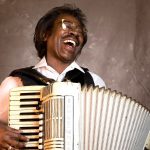

Frankie Lee Sims accompanied Hopkins on a couple of his Gold Star recordings.
In 1960 Bobby Robinson recorded a session with Sims in New York City but these didn’t see the light of day until 1984.
http://www.wirz.de/music/simsfrm.htm
The only interview conducted with Frankie Lee Sims was by Chris Strachwitz in 1960 and published in Blues Unlimited 122 (1976). See item 43 in Stefan’s discography to read the background.
Sims also played guitar on King Curtis’ Soul Twist (or so he claimed in the Strachwitz interview).
Haven’t really dug into this yet, but you’re in my sweet spot. Hound Dog benefitted greatly from the blues revival at college campuses; it enabled him to get out of his weekly gig deal in Chicago. Interestingly, his 2nd guitar player (Brewer Phillips IIRC) also played through the same amp as the Dog. As for Excello and swamp pop courtesy of Jay Miller in Crowley, LA, check out Lazy Lester (“Sugar Coated Love”) and, of course, Slim Harpo.
That’s great that they played through the same amp. Begins to explain that sound — so wrong but so right! And don’t get me started on swamp blues… already devoted two posts to this essential sub-genre: here and here.
Teen 2 Kent. Puffing Locomotive Breath searching Featherstitch. Steps Down into Cove. ” three cords & cloud of dust” Hound Dog fighting trains roaring out back. Home to suburbs in silence because case of 8 tracks all looked trite. Never looked back